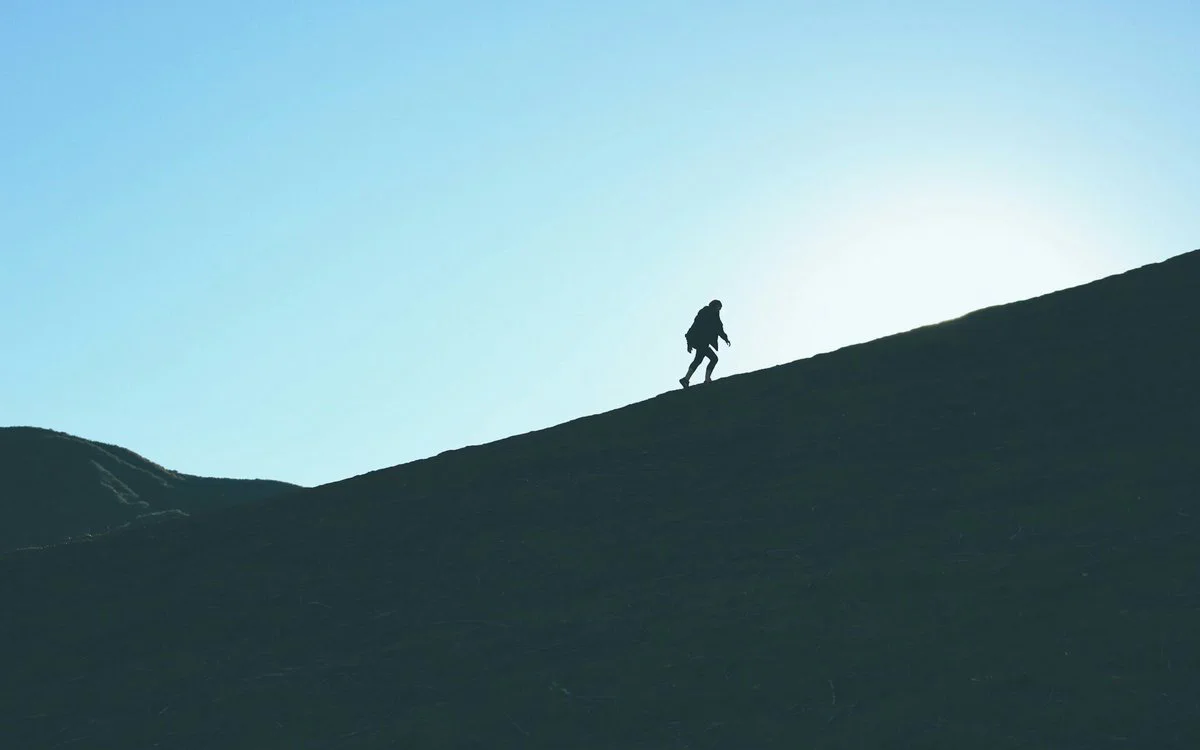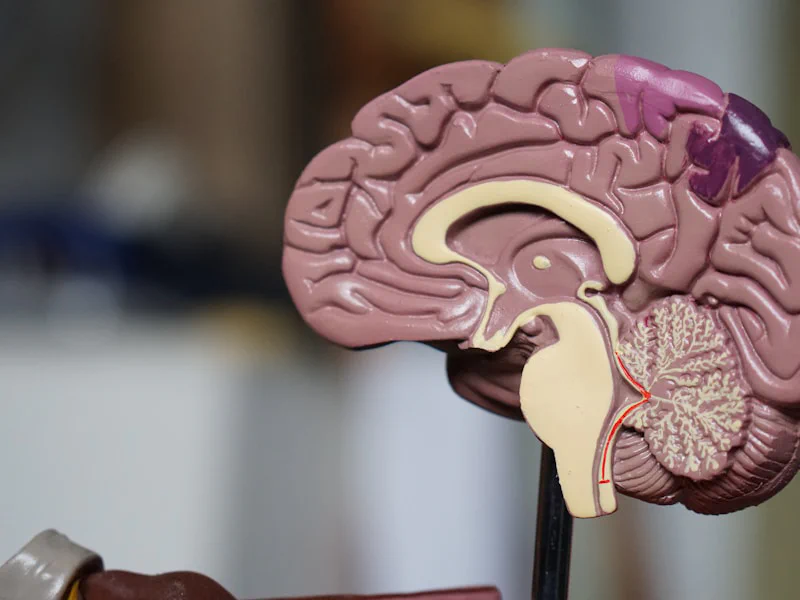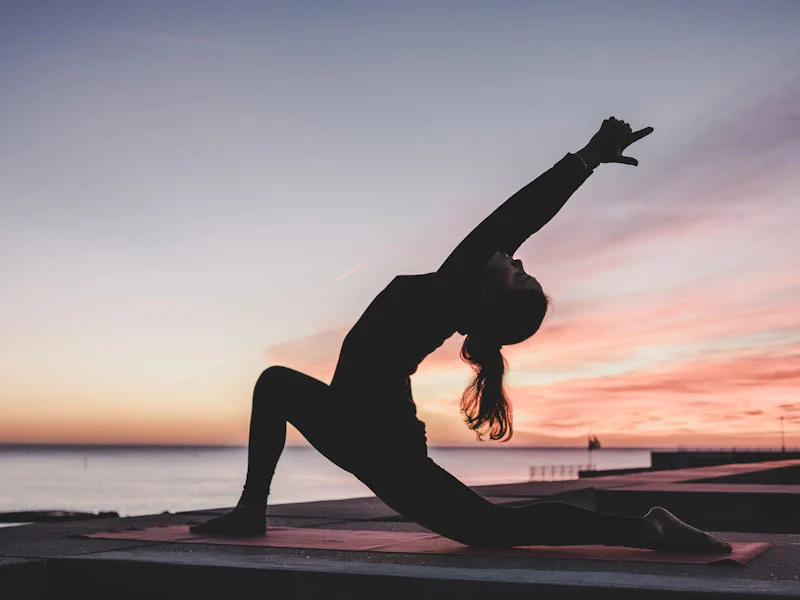Mastering Extended Candle Meditation
Info
🔥 This advanced guide to Trataka (त्राटक) explores time-tested yogic methods and contemporary scientific insights to master extended candle gazing and achieve profound mental stillness.
🌟 Introduction: Why Go Beyond the Basics
In the classical yogic tradition, Trataka (त्राटक) is not merely a visual exercise—it is a Dharana (धारणा) practice, a preparatory step towards deeper meditation (Dhyana - ध्यान). As one progresses beyond beginner stages, the simple act of gazing at a flame transforms into a powerful method for cultivating Ekagrata (एकाग्रता)—the ability to hold unwavering focus on a single object.
Modern scientific literature supports what yogis have long taught: extended periods of focused visual attention recalibrate neural circuits involved in executive function, sensory processing, and attentional stability [1]. Notably, Trataka influences alpha and theta brainwave activity, promoting calm wakefulness and access to subconscious faculties.
As you embark on the path of extended Trataka, this guide will provide:
- Traditional guidance sourced from Hatha Yoga Pradipika (हठयोग प्रदीपिका) and commentaries like Gheranda Samhita (घेरंड संहिता).
- Evidence from contemporary research on attentional training and visual focus.
- Practical refinements for longer sessions, ensuring safety, comfort, and deeper absorption.

⏳ How to Safely Increase Meditation Duration
One of the most frequently asked questions by advancing practitioners is: “How do I extend my Trataka practice without straining my eyes or losing mental clarity?”
The answer, both in traditional yoga texts and modern research, is incremental progression with mindful awareness.
📈 Incremental Expansion: Weekly Duration Guide
Gradual increases in session length allow both ocular muscles and attentional systems to adapt without strain.
| 🗓️ Week | 🕯️ Daily Duration | ✨ Key Focus |
|---|---|---|
| 1–2 | 10–12 minutes | Build comfort beyond beginner thresholds |
| 3–4 | 15–18 minutes | Train visual stability, reduce blinking reflex |
| 5–6 | 20–25 minutes | Develop sustained Dharana without agitation |
| 7+ | 25–30 minutes | Approach meditative absorption (Dhyana) with ease |
👉 Note from Gheranda Samhita (Verse 1.54): “Trataka steadies the wandering mind and purifies the eye. It removes all diseases of the eyes.” Yet, caution is advised—excessive force leads to imbalance, hence the principle of gradual adaptation (Krama - क्रम) is emphasized.
🧿 Sensory and Cognitive Adaptation
Recent research by Raghavendra et al. (2021) demonstrated significant improvements in working memory, reaction time, and alpha brainwave dominance with as little as 15 minutes daily Trataka over 2 weeks [1].
Longer sessions stimulate deeper neural circuits responsible for visual-spatial integration and prefrontal executive control, correlating with yogic goals of Pratyahara (withdrawal of senses) and Dharana.

⚠️ Cautions and Best Practices
- Never force gaze to the point of burning or watering; maintain a soft yet steady Drishti (दृष्टि).
- Observe Samyaka Anupreksha (सम्यक अनुप्रेक्षा)—correct introspection—pausing when signs of ocular fatigue arise.
- Practice in a dimly lit, calm environment to enhance focus without strain.
Tip
📝 Practical Tip: Use closed-eye Trataka cycles every 5–7 minutes during early progression stages. This technique, referenced in Hatha Yoga Pradipika (2.32), prevents fatigue and facilitates after-image training.
👁️ Refining the Gaze: Techniques for Stability and Comfort
At the intermediate stage of Trataka (त्राटक), the practitioner’s evolution is marked by a shift from gross effort to subtle refinement (Sūkṣma Sādhana - सूक्ष्म साधना). A stable, effortless gaze not only deepens Dharana (धारणा) but also reduces physical strain.
🟣 Key Advanced Gaze Techniques
| 🧿 Technique | 🌟 Description |
|---|---|
| 💤 Ardha-nimīlana Drishti (अर्धनिमीलेन दृष्टि) | Practicing with half-closed eyelids reduces eye dryness and facilitates a softer internalization of focus. |
| 👁️ Mridu-drishti (मृदुदृष्टि) | Maintaining a gentle, non-strenuous gaze avoids over-contraction of ocular muscles, prolonging session duration. |
| 🔄 Open-Closed Eye Cycling | Alternating between focused external gazing and closed-eye after-image visualization prevents ocular fatigue and facilitates Antar Trataka (अन्तर त्राटक). |
This technique involves gazing at the candle flame with half-closed eyelids, reducing the exposed surface area of the eyes. By narrowing the eye aperture, the practitioner minimizes eye dryness and blinking reflex, facilitating longer sessions without discomfort.
It also reduces external sensory input, gradually internalizing focus and preparing the mind for Antar Trataka (inner visualization). Practiced properly, it promotes pratyahara—the withdrawal of senses—while preserving gaze stability.
👁️ Key benefits:
- Reduces external sensory stimulation.
- Encourages internalization of focus.
- Supports Pratyahara (withdrawal of senses).
- Recommended during progressive session lengthening.
Mridu-drishti refers to maintaining a soft, gentle gaze on the flame without tensing facial or ocular muscles. Instead of a sharp, rigid focus, practitioners allow the gaze to rest lightly on the flame’s tip or inner core, avoiding any sensation of ‘staring’.
This prevents the build-up of strain, especially in longer sessions, and enables a smoother transition into deeper concentration (Dharana). It aligns with yogic principles of effortless effort (Prayatna Shaithilya - प्रयत्न शैथिल्य).
👁️ Key benefits:
- Promotes a relaxed, natural gaze without ‘staring’.
- Aligns with Prayatna Shaithilya (effortless effort).
- Reduces mental agitation by encouraging easeful focus.
- Ideal for long-duration Trataka.
This involves alternating between periods of open-eye gazing (Bahya Trataka) and closed-eye after-image observation (Antar Trataka). Typically, every 5–7 minutes of open-eye focus is followed by 30–60 seconds of closed-eye awareness.
This cycle prevents visual fatigue, enhances the ability to hold after-images longer, and builds a bridge between external (Bahya) and internal (Antar) Trataka practices. It is particularly useful for progressively increasing session lengths while maintaining eye health and mental clarity.
👁️ Key benefits:
- Prevents ocular fatigue.
- Trains you to sustain after-image awareness.
- Balances external and internal focus.
- Smoothes the transition towards longer, deeper meditation states.
👉 Gheranda Samhita (1.54) recommends balance—“Drishti steadies the mind but must not injure the physical organs”.
🔬 Scientific Insight:
Recent oculomotor studies (Bahill et al., 2016) reveal that micro-saccades (small involuntary eye movements) decrease with sustained gentle focus, reducing mental agitation [4]. This correlates with the yogic concept of Indriya Nigraha (इन्द्रिय निग्रह)—sense restraint.

🧘♀️ Posture for Longer Sessions
Tip
📝 Asana Siddhi (आसन सिद्धि)—stability in posture—is a prerequisite for deep Trataka absorption.
Spine
Upright yet Relaxed Alignment
Maintain an upright but effortlessly relaxed spine throughout your extended Trataka sessions. Lightly engage Mula Bandha (मूल बंध)—the root lock—which activates the pelvic floor muscles and encourages a natural lift through the spine. This subtle engagement prevents lower back strain and stabilizes your seated posture. Preserve a gentle lumbar curve to avoid slouching, allowing energy to flow through the Pranic channels (Nadis - नाड़ी) with ease.
Leg Position
Stable, Supported Sitting
A stable seat is fundamental to long-duration focus. Sit comfortably in Sukhasana (सुखासन), ensuring your knees rest on the floor or are supported. Use a cushion or folded blanket to elevate the hips slightly above the knees, reducing hip and knee tension. Practitioners with tighter hips may opt for a meditation bench or a firm chair, maintaining spinal alignment while avoiding discomfort.
Hand Position
Gyan Mudra for Mental Clarity
Place your hands gently on your knees in Gyan Mudra (ज्ञान मुद्रा)—with the thumb and index finger lightly touching, while other fingers remain relaxed and extended. This mudra promotes mental clarity (Jnana ज्ञान), reduces upper body tension, and prevents shoulders from collapsing forward. Keep elbows softly bent, never locked, to maintain a relaxed yet focused posture.
Neck Alignment
Gentle Chin Tuck for Cervical Comfort
Align your neck and head with the spine using principles from Brahma Mudra (ब्रह्म मुद्रा). Introduce a gentle chin tuck (Jalandhara Bandha - जलन्धर बंध) to prevent forward head posture, supporting cervical comfort during long sittings. This slight chin adjustment minimizes neck fatigue and assists in inner gaze alignment, particularly beneficial during transitions to Antar Trataka (अन्तर त्राटक).
🧰 Propping Techniques for Sustainable Comfort
Yoga Blocks
Knee Support
Use yoga blocks or firm cushions under your knees if they do not comfortably reach the floor. This prevents the thighs from pulling on the lower back and keeps the hips relaxed during extended sessions. Proper knee support ensures longer, pain-free sittings without compromising posture integrity.
Folded Blankets
Hip Elevation
Place folded blankets or a firm cushion beneath the hips to slightly elevate the pelvis. This gentle lift naturally tilts the pelvis forward, helping maintain the spine’s neutral curve and reducing pressure on the sacrum. Elevating the hips is especially beneficial for those practicing Sukhasana (सुखासन) or other cross-legged positions.
Meditation Benches and Low Stools
Flexibility
For practitioners with limited hip flexibility or knee concerns, meditation benches or low stools offer an excellent alternative. These props allow the spine to remain tall while alleviating stress from the lower body. Ideal for Vajrasana (वज्रासन) or kneeling postures, benches provide comfort while preserving alertness and alignment.
Chair-Based Modifications
Accessibility
If floor sitting is not feasible, practicing on a straight-backed chair is fully acceptable. Sit with feet flat on the ground, maintaining a 90-degree angle at the knees, and follow all upper body posture principles. Use a small cushion behind the lower back if needed to sustain a neutral lumbar curve, ensuring spinal alignment while practicing Trataka.
📖 Rooting Practice in Classical Tradition
In advancing your Trataka (त्राटक) journey, it is essential to understand that these techniques are not recent inventions but have been part of the yogic system for centuries. The wisdom of traditional texts like the Hatha Yoga Pradipika (हठयोग प्रदीपिका) and Gheranda Samhita (घेरंड संहिता) guides practitioners beyond just physical postures into the realm of Dharana (धारणा) and Dhyana (ध्यान)—concentrated focus and meditative absorption.
🪷 Why Posture and Gaze Are Foundational in Classical Yoga
The Hatha Yoga Pradipika (1.17) states:
“स्थिरं सुखं चासनं” — The posture must be steady and comfortable, forming the firm foundation upon which the mind can stabilize and progress towards meditation.
This verse highlights that steadiness in Asana (आसन) leads to lightness in the body and clarity in the mind, naturally reducing distractions from the senses—a prerequisite for Pratyahara (प्रत्याहार) and Dharana (धारणा).
Similarly, Gheranda Samhita (1.54) proclaims:
“Trataka steadies the wandering mind and purifies the eyes, removing ocular disturbances.”
This signifies that correct Drishti (दृष्टि) practice:
- Stabilizes mental fluctuations.
- Cleanses visual pathways, enhancing sensory clarity.
- Supports the deeper meditative journey.
🧘 Why This Matters for the Modern Practitioner
Many contemporary practitioners approach Trataka as a concentration hack or merely a focus exercise. However, these classical commentaries remind us:
- Physical alignment (Asana) and eye stability (Drishti) are not goals in themselves but gateways to internal stillness.
- Prolonged, effortless gazing trains the practitioner for Antar Trataka (अन्तर त्राटक) and Samadhi (समाधि)—the deeper stages of yoga.
Embracing these traditional insights cultivates a respectful, holistic approach, ensuring your practice remains rooted in authentic yogic discipline while benefiting from modern scientific understanding.
In Hatha Yoga Pradipika (1.17), it is emphasized: “Steadiness in Asana brings lightness in body and mind, forming the foundation for Pratyahara and Dharana.”
Tip
📝 Adjustment Tip: Subtle posture shifts every 7–10 minutes during early progression phases prevent muscular fatigue without disrupting focus.
🎵 Enhancements for Deep Immersion
Intermediate and advanced practitioners of Trataka (त्राटक) may find their sessions enriched through selective sensory augmentations. These are not mandatory but serve to deepen Dharana (धारणा) and facilitate Pratyahara (प्रत्याहार).
🎶 Nada Yoga Integration (नाद योग)
| 🎵 Practice | 💡 Purpose |
|---|---|
| 🌊 Nature Sounds | Supports subtle internalization of awareness; gentle ambient tracks of water, wind, or forest aid relaxation. |
| 🪷 Nada Yoga Mantras | Low-volume mantra chants (e.g., Om, So-Ham) regulate breathing and stabilize attention rhythms. |
| 🎹 Instrumental Drone (Tanpura Sound) | Minimalist drone sounds create a steady auditory anchor, enhancing flame-induced focus. |
Practicing Trataka with gentle nature sounds—such as ocean waves, forest ambiance, or soft rainfall—supports Pratyahara (withdrawal of senses) by replacing jarring background noises with harmonious, non-intrusive auditory cues. The rhythmic patterns of nature sounds can naturally synchronize with the breath, promoting calmness (Shanta Bhava - शान्त भाव) and making it easier to sustain longer meditation sessions without mental fatigue.
👁️ Best used when:
- Practicing in environments with unpredictable noise.
- Intending to cultivate relaxation over intense focus.
🎧 Sample Audio: Listen to this gentle birds chirping sound for reference:
Nada Yoga Mantras (नाद योग मंत्र) involve subtle sound repetition, such as Om (ॐ) or So-Ham (सोऽहम्), softly playing in the background during Trataka. The repetitive, calming sound anchors the auditory sense (Shabda Indriya), supporting Dharana (focused attention).
👁️ Key benefits:
- Regulates breathing rhythms naturally.
- Combines visual and auditory concentration to deepen mental absorption.
- Fosters inner tranquility by reducing cognitive chatter.
The use of a Tanpura (तानपूरा) drone or minimalist instrumental background offers a stable, continuous sound frequency, creating a sonic bedrock over which visual concentration unfolds. The shruti (श्रुति) from the drone helps balance the nervous system, known in Nada Yoga (नाद योग) to enhance alpha brainwave states associated with meditative calmness.
👁️ Ideal for:
- Evening or extended sessions where stillness and depth are prioritized.
- Transitioning from external focus (Bahya Trataka) to internal absorption (Antar Trataka).
Research from Kumar et al. (2018) in International Journal of Yoga found combining Nada Yoga with visual meditation increased parasympathetic activation and subjective tranquility [5].
Info
When traditional flame gazing isn’t practical, virtual alternatives can maintain your practice continuity.
📱 Explore Virtual and Technological Support - Learn about digital Trataka tools, apps, and best practices for virtual flame meditation.
🚀 Try Our Candle Meditation App - Download our app for guided virtual Trataka with customizable flames and ambient soundscapes.
⚠️ Managing Common Challenges at Advanced Stages
Even seasoned practitioners encounter physical and mental hurdles during extended Trataka sessions.
💡 Advanced Troubleshooting Strategies
| 🚩 Challenge | 🛠️ Solution |
|---|---|
| 💧 Eye Watering | Use Chakshu Vishrama (चक्षु विश्राम): short eye-rest cycles; open-closed eye alternation every 7–8 minutes. |
| 😵 Mental Plateau | Integrate Antar Trataka (अन्तर त्राटक): after-image visualization between external gazing cycles. |
| 🪑 Postural Fatigue | Incorporate intermittent micro-movements without gaze disruption (gentle neck rolls). |
| 🧘♀️ Attention Fluctuations | Brief Pranayama (प्राणायाम) (e.g., Nadi Shodhana) before Trataka session to stabilize mind beforehand. |
Eye watering beyond the initial adaptation phase can arise from excessive strain (Ati-prayatna - अति-प्रयत्न) or improper gaze intensity. To mitigate this, use Chakshu Vishrama (चक्षु विश्राम)—structured eye-rest cycles:
- Every 7–8 minutes, softly close the eyes and shift attention to the after-image (Antar Trataka).
- Upon reopening, reduce gaze sharpness, practicing Mridu-drishti (soft gaze).
Remember, Trataka should purify the eyes, not exhaust them—as taught in Gheranda Samhita (1.54).
During extended practice, practitioners often experience the “plateau effect”, where mental calmness seems stagnant. This usually signals the need for sensory rhythm variation.
👁️ Solutions:
- Introduce Antar Trataka (अन्तर त्राटक): after-image focus during closed-eye cycles.
- Utilize breath awareness (Svasa Dhyan - स्वास ध्यान) to subtly reset mental rhythm.
- Occasionally shift session timing (e.g., morning to evening) to refresh neurological engagement.
Plateaus are natural milestones, signaling a readiness for deeper internalization.
Discomfort after 20–30 minutes typically stems from micro-misalignment or stagnant muscle tension.
👁️ Countermeasures:
- Introduce small posture corrections every 10–12 minutes without disengaging gaze (e.g., micro-spine lift, subtle shoulder rolls).
- Practice Mula Bandha activation cycles, lightly engaging pelvic floor muscles for brief moments to revitalize spinal alignment.
- Post-session: perform counter-poses (Shavasana, gentle twists) to neutralize accumulated strain.
The key is to balance physical stability with flexibility (Sthira Sukham Asanam - स्थिरं सुखं आसनम्).
As sessions extend, brief phases of restlessness (Chanchalata - चञ्चलता) are common.
👁️ Techniques to stabilize:
- Practice Nadi Shodhana Pranayama (नाड़ी शोधन प्राणायाम) before Trataka to quieten the Vata dosha tendencies (agitation).
- Use “awareness checkpoints” every few minutes—mentally note “Here” or “Now” without disrupting visual focus.
- On high-restlessness days, reduce session duration but increase session frequency (e.g., 2×15 minutes).
Restlessness is not failure—it signals an energy adjustment phase before deeper absorption.
Tip
📝 Recovery Tip: Split longer sessions into “double sessions”—two 15-minute rounds separated by a 5-minute relaxation window (Vishrama काल).
🧠 Scientific Insight: How Extended Trataka Impacts the Mind and Body
Modern neuroscience aligns closely with what ancient yogic texts have suggested for centuries—prolonged focused gazing (Trataka) brings neurocognitive benefits alongside sensory discipline.
🔬 Enhanced Cortical Plasticity
- Regular Trataka practice leads to improved cortical plasticity, meaning the brain adapts and forms new neural connections faster.
- A 2021 study by Raghavendra et al. showed that just 15 minutes per day of Trataka increases alpha wave activity, which correlates with improved relaxation and working memory capacity [1].
👁️ Improved Visual-Spatial Processing
- Sustained visual fixation during Trataka reduces saccadic eye movements, allowing the brain to streamline visual input and improve spatial awareness [4].
- This can lead to enhanced attentional stability and faster reaction times, as observed in cognitive performance tests.
🧘♀️ Reduced Stress and Better Autonomic Balance
- Studies on Nada Yoga and combined Trataka sessions indicate a parasympathetic nervous system (PNS) dominance—resulting in lower stress levels and improved heart rate variability (HRV) [5].
- The PNS activation is crucial for maintaining mental calmness, especially during longer sessions.
🟣 Avoiding Overstimulation: The Balance Principle
- While extended gazing enhances Dharana (धारणा), overextension may cause ocular strain or mental dullness (Tamas - तमस).
- Research supports the use of interval cycles (e.g., open-closed eye practices) to prevent neural fatigue, a practice mirrored in Hatha Yoga Pradipika (2.32).

📝 Summary Takeaways from Science
- ✅ 15–30 minutes of Trataka can improve cognitive flexibility and relaxation states.
- ✅ Interval-based practice enhances sustainability in longer sessions.
- ✅ Combining visual fixation with breathwork or sound anchoring maximizes attentional endurance.
By combining yogic wisdom with modern neuroscience, practitioners can confidently extend their Trataka sessions while maintaining safety and maximizing benefits.
✅ Summary: Best Practices for Extended Candle Meditation
Mastery in Trataka (त्राटक) is not about forcing duration, but about refining Dharana (धारणा), maintaining Mridu-drishti (मृदुदृष्टि), and progressing with Samyaka Anupreksha (सम्यक अनुप्रेक्षा)—right introspection.
| 📌 Focus Area | 🟢 Key Takeaway |
|---|---|
| 🧿 Gaze | Soften gaze, cycle open/closed eyes, use after-image |
| 🪑 Posture | Comfort first, micro-adjustments prevent fatigue |
| 🎶 Sound | Optional Nada Yoga, ambient sound to deepen focus |
| ⏳ Duration | Gradual weekly increases; 25–30 min sustainable ceiling |
| 🧘 Recovery | Integrate eye rest, mental checkpoints, mindful pauses |
Tip
🚩 Milestone Check: The first 4–6 weeks build your capacity. Around week 7–8, you should experience longer spans of unbroken mental stillness (Nirodha - निरोध).
🔗 What’s Next? Exploring Inner Visualization
Having developed Bahya Trataka (बाह्य त्राटक)—external gazing—you are now prepared to dive inward (Antar Trataka - अन्तर त्राटक).
Continue your journey with advanced techniques or explore our research section to understand the science behind Trataka practice.
📚 References
- Raghavendra, B.R. et al. (2021). Effect of Trataka on Cognitive Performance and EEG Brainwaves. Frontiers in Psychology
- Muktibodhananda, S. (1998). Hatha Yoga Pradipika Commentary. Yoga Publications Trust, Bihar, India.
- Gheranda Samhita (translation and commentary), Kaivalyadhama Yoga Institute, 2010.
- Bahill, A.T., & Stark, L. (2016). The Role of Micro-Saccades in Fixational Stability. PubMed
- Kumar, K., et al. (2018). Effect of Nada Yoga on Anxiety and Heart Rate Variability. International Journal of Yoga
